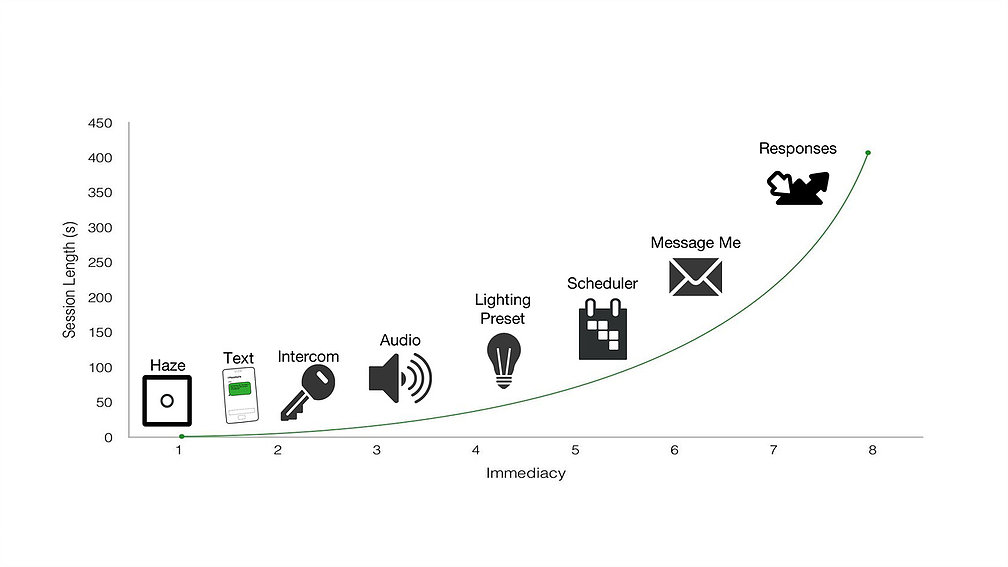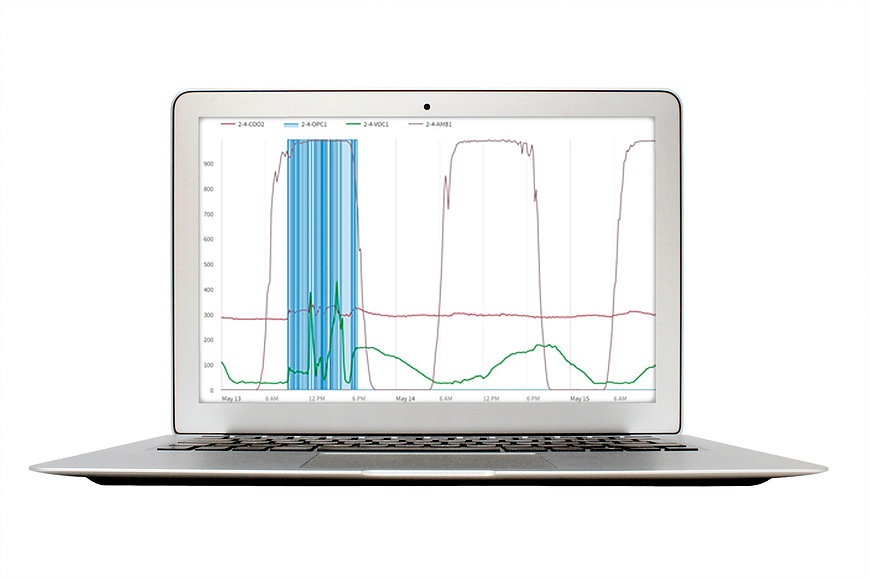
Smart home control explained. There are a number of ways that people can interact with smart homes and smart devices.
User Interface or UI is the space where interaction between humans and the buildings occurs. This is particularly challenging in a building control system due to the variety of interactions that are needed, ranging from turning on a light to configuring a ventilation system.
Designing a UI is a balance between simplicity and functionality. As more functionality is needed by the user the UI will become more complex. Consequently the appropriate UI devices will change depending on the complexity of the task to be undertaken.

This is illustrated on the chart above; while the Haze light switch is simple and instantaneous to use it can only provide a limited number of functions. At the other end of the scale is Responses which can be very powerful allowing a bespoke behaviours to be written, such as changing the building heating and lighting depending on the users but will require a computer to set up.
The appropriate UI device also needs to take into account of the likely user and their requirements, in a family home users can learn some complexity for example to benefit from Haze switching, to control a number of devices in a room (see Haze blog), or even a wall mounted tablet. In a community building users cannot be expected to know the way the building works so only the most simple devices can be used (such as rocker switches) even if this means a bank of switches with labels.
One of the core principles on Atamate is that system needs to be simple, to install, live with, and maintain. In many installation the users are not even aware there is an Atamate system installed.

One of the things we have noticed is the increased interest in healthy buildings. In particular, a recent change in building is the increasing use of airtight...